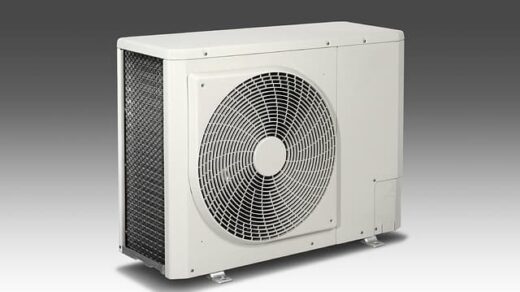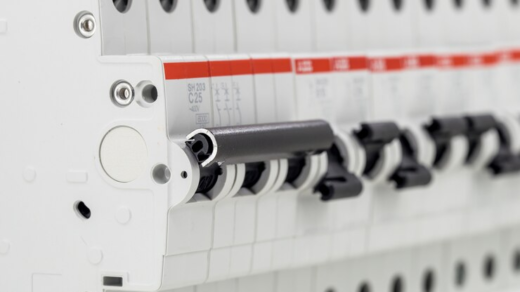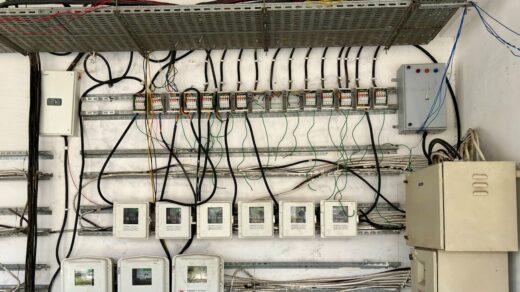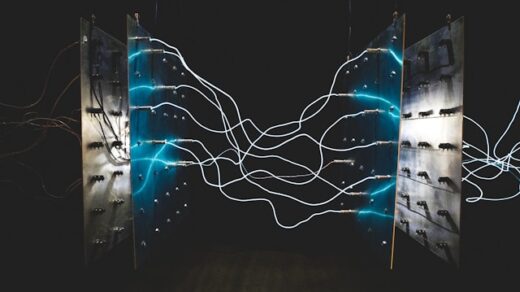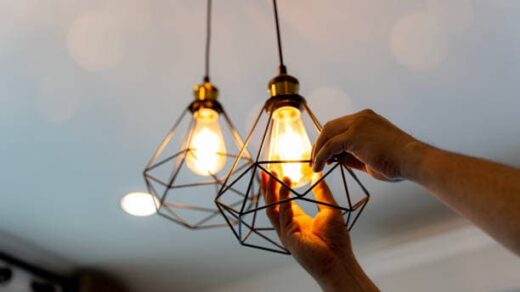In a world where illumination is crucial, understanding the intricacies of lightbulbs has become vital for optimizing their use. By passing electricity through a metallic filament, these bulbs glow, making our nights brighter. However, as with everything, there’s an array of choices, each with its pros and cons.
1. Incandescent Bulbs
As one delves into the realm of lighting solutions, the incandescent bulb stands as a testament to time-honored tradition. Since its invention, it has illuminated countless homes and establishments with its familiar glow. At the heart of every incandescent bulb is a filament. When electricity courses through it, the filament heats up and emits light, resulting in the characteristic glow that many associate with warmth and comfort.
Pros:
- Comforting Radiance: The soft, warm glow from these bulbs offers a sense of coziness, being easy on the eyes;
- Cost-Effective: One of their most enticing attributes is their affordability, making them accessible to many;
- Versatile Use: Their adaptability is noteworthy, fitting into diverse lighting situations;
- Ubiquity: These bulbs’ widespread popularity ensures their availability in almost every store.
Cons:
- Lesser Energy Efficiency: In an age of energy conservation, incandescents lag behind their contemporaries;
- Heat Concerns: Emitting significant heat, they could pose potential hazards in certain settings;
- Toxic Elements: Their mercury content raises environmental and health concerns;
- Shorter Shelf Life: They often need replacement sooner than other modern alternatives;
- Color Bias: The pronounced yellowish tint might not resonate with everyone’s aesthetic preferences.
Though incandescent bulbs have faced competition from newer, more efficient lighting technologies, their nostalgic glow and affordability ensure they remain a cherished option for many.
2. Fluorescent Bulbs
In the ever-evolving world of lighting, gas-operated bulbs, often recognized as fluorescent lights, have marked their distinct space. Employing a unique mechanism, they have both fans and critics in the consumer market. These bulbs operate on a straightforward principle: using gas to generate ultraviolet light. This ultraviolet light then interacts with a phosphor coating inside the bulb, resulting in the emission of visible light.
Pros:
- Leading in Efficiency: Among their strongest suits, these bulbs are known for their impressive energy efficiency;
- Soft Illumination: Emitting a gentler light, they create an ambient atmosphere;
- Cool Operation: Unlike some other bulbs, their minimal heat production is a distinct advantage;
- Promised Savings: Over time, their use can translate to noticeable energy savings, appealing to the eco-conscious.
Cons:
- Higher Initial Costs: While they offer long-term savings, their initial purchase can be pricier than traditional incandescent options;
- Mercury Concerns: The inclusion of mercury raises eyebrows due to environmental and health implications;
- Flicker Issues: For some users, the intermittent flickers can be a significant distraction;
- Light Quality: Not everyone is a fan; some find the emitted light a bit too artificial or harsh.
Gas-operated bulbs, with their unique attributes, offer a viable alternative in the diverse lighting landscape, catering to those prioritizing efficiency and softer lighting.
3. LED Bulbs
The advent of LED (Light Emitting Diode) technology has revolutionized the illumination industry, introducing a blend of efficiency and quality that stands out. At its core, an LED operates through the movement of electrons in a semiconductor material. When electrified, these electrons generate light, resulting in the illumination we see.
Pros:
- Masters of Efficiency: LEDs are renowned for their energy-saving capabilities, making them a top choice for the environmentally conscious;
- Safety First: Their ability to produce light with minimal heat significantly reduces potential fire hazards;
- Pristine Illumination: The clarity and quality of light they emit are unparalleled in many instances;
- Green Choice: Absence of toxic elements underscores their eco-friendly nature;
- Built to Last: Their lifespan, often stretching into thousands of hours, sets them apart from many alternatives.
Cons:
- Color Temperature: Some users find the bluish hue of certain LEDs less appealing than the warm glow of traditional bulbs;
- Initial Investment: While they offer long-term savings, their upfront cost can be a deterrent for some;
- Chemical Components: While many models are eco-friendly, some do contain harmful substances like mercury, which requires careful disposal.
In the contemporary lighting panorama, LEDs shine brightly, offering an amalgamation of efficiency, longevity, and quality, albeit with a few considerations.
4. Compact Fluorescent (CFL) Bulbs
A compact and efficient cousin of the traditional fluorescent, CFLs use a trace of mercury for light production.
Pros:
- Stellar energy efficiency;
- Outlive incandescents;
- Emit lesser heat.
Cons:
- Mercury presence is a concern;
- They’re pricier than their incandescent counterparts;
- Full brightness takes a moment to achieve;
- Some models might produce an irritating buzz or flicker.
5. Halogen Bulbs
For many, the intricate details of lightbulbs remain in the dark. However, understanding their mechanisms and features is vital for efficient and effective illumination. One of the fascinating types that have garnered attention is the halogen bulb. Halogen bulbs operate through a unique process where an electric current interacts with halogen gas, producing light that is both bright and warm. These bulbs have been recognized for several advantages but also come with a few considerations.
Pros:
- Superior Energy Efficiency: Among their most notable advantages, halogen bulbs excel in conserving energy;
- Longevity: These bulbs typically outpace the lifespan of traditional incandescents;
- Impressive Brightness: Their luminance level is often singled out for praise;
- Compact Nature: Their design facilitates easy transportation;
- Eco-friendliness: Being environmentally responsible becomes simpler with these bulbs.
Cons:
- Heat Production: Their capacity to produce excessive heat can be a concern, especially in confined spaces;
- Presence of Mercury: Although in minimal amounts, mercury traces in these bulbs can raise eyebrows;
- Price Point: They might strain the pocket more than their counterparts;
- Variable Durability: Some users have noted inconsistent lifespans among different bulbs.
In the vast universe of lighting, where every bulb type has its own niche, halogens offer a blend of warmth and brightness that many find appealing. However, as with all things, it’s essential to weigh the pros and cons to find the best fit for one’s specific needs.
6. Sodium Vapor Lamps
Best for streets and factories, these bulbs glow by ionizing sodium vapor.
Pros:
- Their efficiency is praiseworthy;
- Durability is a hallmark;
- Operational costs are low.
Cons:
- Flickering can be an issue;
- Their orange hue isn’t universally preferred.
7. Mercury Vapor Lamps
With a sealed mercury chamber, these bulbs are versatile in their applications.
Pros:
- Their longevity is impressive;
- Operation is cost-effective;
- Their brightness mimics natural sunlight;
- Cold weather doesn’t affect them;
- They’re recyclable.
Cons:
- Broken bulbs release mercury;
- Disposal demands caution;
- Initial costs are steep;
- Some dislike the bluish-white glow;
- UV radiation traces can irritate the eyes.
8. Smart Bulbs
Marrying technology with illumination, these bulbs sync with Wi-Fi and smart devices.
Pros:
- Energy conservation is paramount;
- Customized control enhances user experience;
- They promise longevity;
- Aesthetics meet functionality with varied designs;
- Voice-controlled adaptability simplifies operations.
Cons:
- Pricier than regular bulbs;
- A smart home hub is essential;
- Internet dependency is a drawback;
- Privacy breaches are potential risks;
- Technology updates are frequent and necessary;
- Glitches can occur.
9. Spotlight Bulbs
Ideal for highlighting, these bulbs focus on precision.
Pros:
- Their intense illumination is notable;
- Energy efficiency is commendable;
- They’re designed for longevity;
- Heat emissions are minimal;
- Affordability and accessibility are beneficial.
Cons:
- Price might be higher compared to basic bulbs;
- Heat could be a concern;
- The intense light can be jarring;
- Attractiveness to insects can be problematic;
- Their life might be shorter than anticipated.
10. Reflector Bulbs
In the realm of specialized lighting, reflector bulbs have carved a niche, and Brennan Electric’s offerings elevate the experience even further. The unique proposition of these bulbs lies in their design. They harness the power of reflectors to channel light with exceptional accuracy and precision, perfect for settings that require directed illumination.
Pros:
- Masters of Direction: Their ability to pinpoint light effectively is unmatched;
- Bright and Sharp: Brennan Electric’s bulbs are reputed for their clear and focused illumination;
- Stay Cool: Despite their brightness, they manage to produce light with minimal heat;
- Longevity: Engineered for endurance, these bulbs promise a significant lifespan.
Cons:
- Priced on the Higher Side: Premium performance comes with a slightly elevated price tag;
- Potential Glare: Their intense focus can sometimes result in a strong glare, which might not suit every setting;
- Inconsistent Coverage: While they excel in direction, they can sometimes cast uneven or shadowed lighting;
- Limited Breadth: In spaces requiring expansive illumination, these might not be the first choice.
Brennan Electric’s reflector bulbs are emblematic of precision lighting. While they come with their set of considerations, in the right setting, they can truly shine unparalleled.
To wrap up
In conclusion, the world of lightbulbs is vast and varied, with each type offering unique benefits and drawbacks. From the traditional warmth of incandescents to the technological marvel of smart bulbs, choices abound based on individual needs and preferences. Being informed about these options not only aids in making energy-efficient decisions but also ensures that spaces are illuminated optimally. As advancements continue, it’s exciting to envision the future of lighting and how it will further shape our lives.

